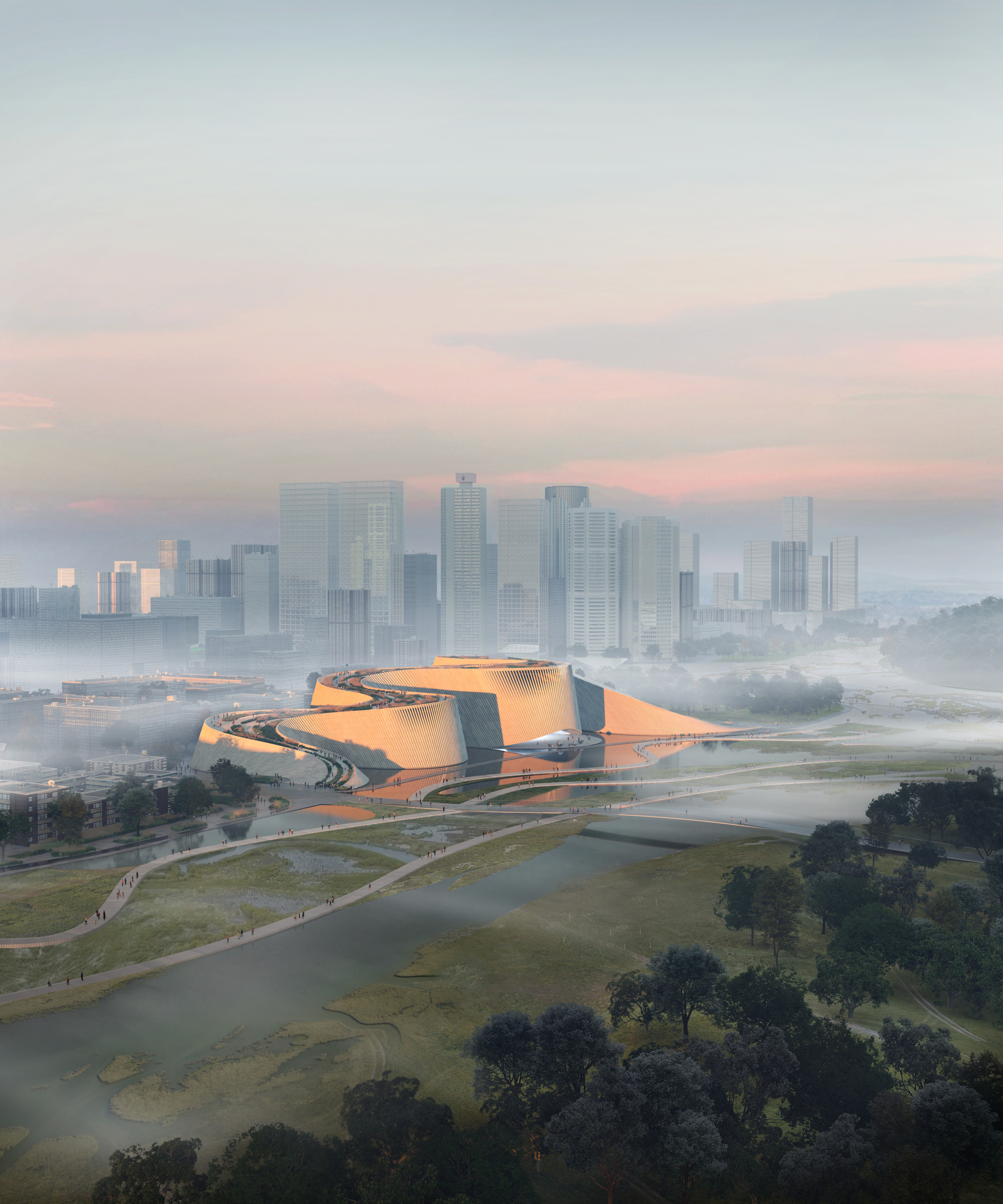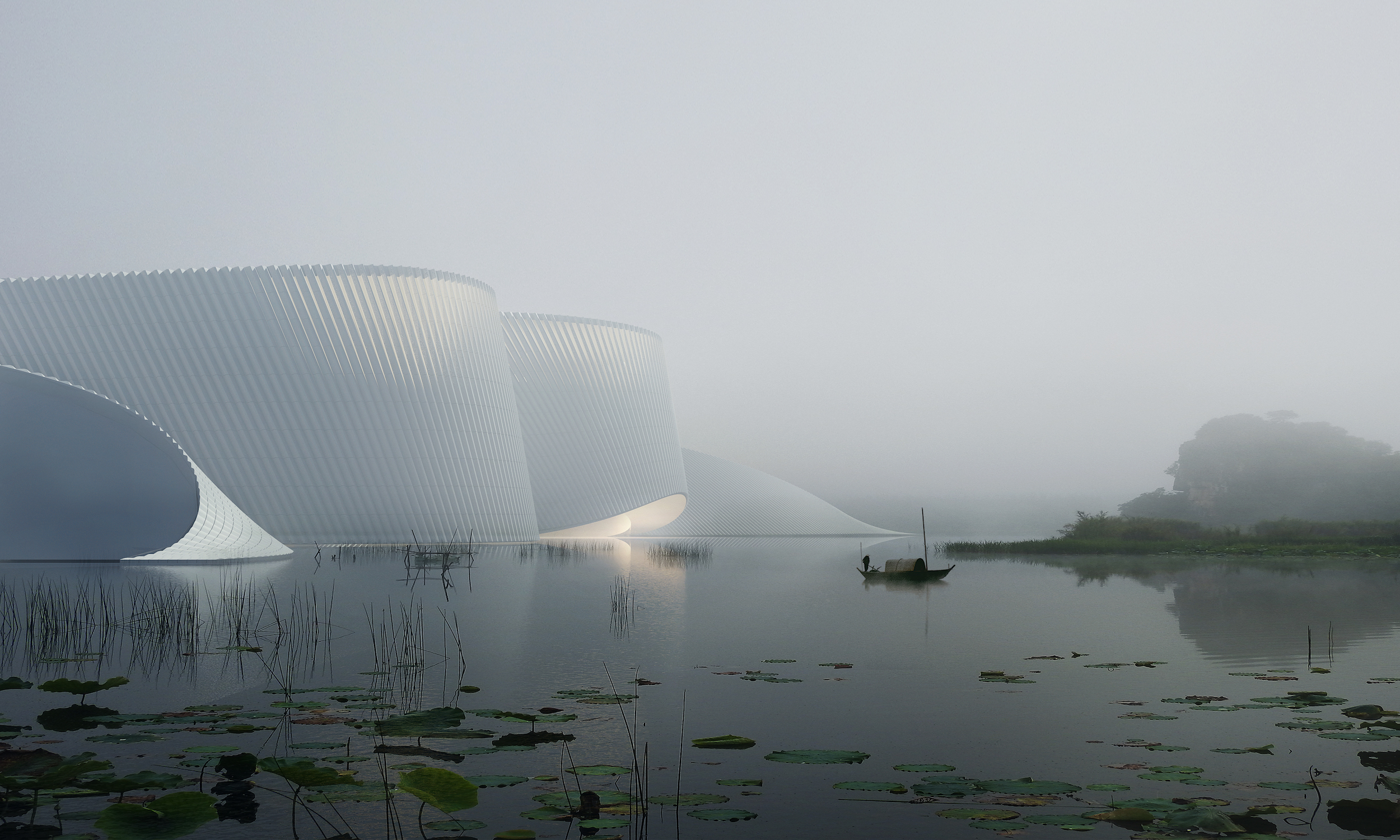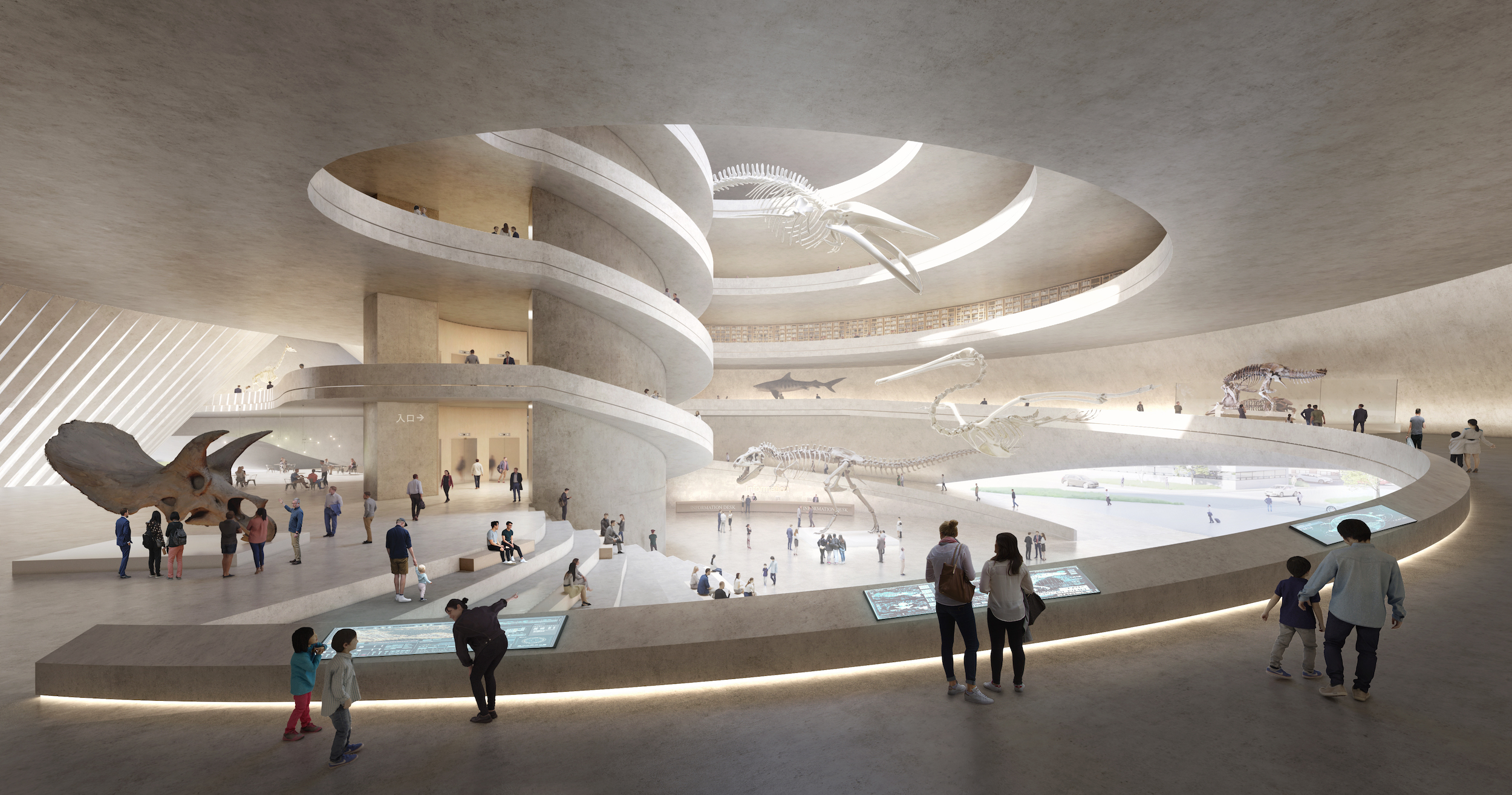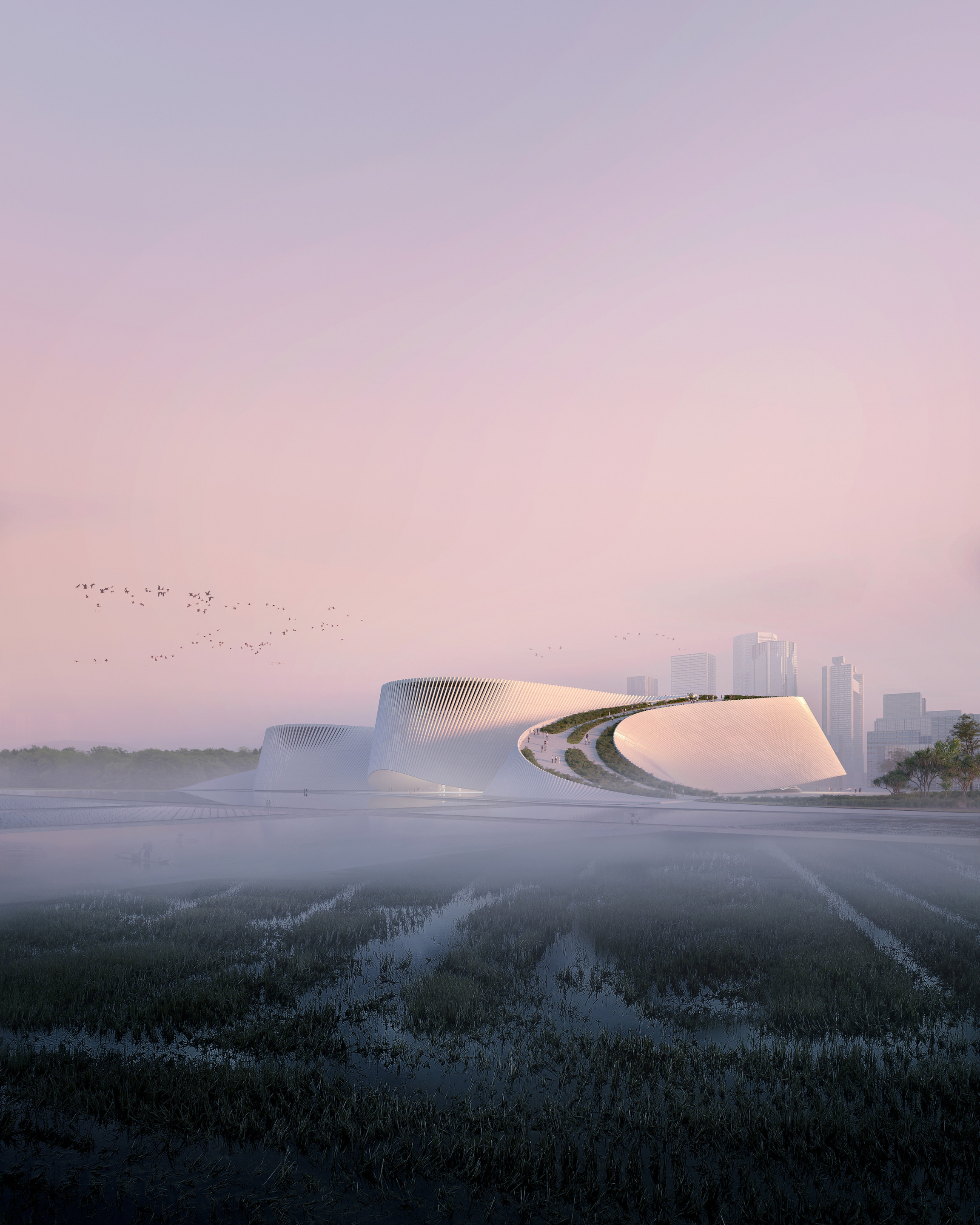Delta, a design scheme conceived by a globe-spanning consortium of architecture firms–the Copenhagen-headquartered 3XN, Toronto’s B+H Architects, and Chinese practice Zhubo Design—has been named the winner of an international design competition seeking proposals for the new Shenzhen Natural History Museum for the rapidly growing city of the same name on the Pearl River Delta.
Per a press announcement shared by B+H, Delta beat out over 70 other submitted proposals, 15 of which advanced to the bidding stage and represent firms hailing from 18 countries from across Asia, Europe, and North America. The team behind the winning museum proposal fully represents that geographic heterogeneity.

The over 450,000-square-foot riverfront facility is to be built in Yanzi Lake area of Shenzhen’s Pingshan District as one of the city’s so-called “10 Cultural Facilities of the New Era” and will be the first large-scale, comprehensive cultural institution focused on the natural sciences in South China. According to the announcement, the new museum will be “dedicated to interpreting the laws of natural evolution, showing the geographies of Shenzhen and its ecology in a global perspective, and actively advocating science.”
As reported in a news article published in March, total investment in the project is $496 million, excluding the cost of acquiring a wide-range of specimens—animals, plants, minerals, and fossils—that will be on display throughout over 365,000 square feet of exhibition-dedicated space. A construction timeline has not been announced.

As for the winning design from 3XN, B+H, and Zhubo Design, Delta takes the form of a hulking structure that gently bends and curves much like the riparian environment that it emerges from. Surrounded by the lush landscape of Yanzi Lake Park, the museum will be topped by a green roof that traces the building’s sinuous organic form and serves as a natural extension of said parkland. “Like a river stream finding its shape in balance with the earth, every turn frames a new spectacular view over the surrounding park, hills, and lake from dedicated viewing terraces along the roof park,” explained the team. From the meandering rooftop park, a cave-like corridor flanked by cafes and other public areas—the “pulsating heart of the building”—transports museum guests into the main lobby area.
Ahead of the announcement of the winning design, English-language newspaper Shenzhen Daily noted that the museum will “become an important window for the display of public culture and urban civilization of Shenzhen, a key public building in the city, and an integral part of public spaces on the bank of Yanzi Lake.”

“This building captures the unique atmosphere of a riverfront site and finds the timeless property of water as a concept. The connection between function, site, concept, structure, material and space is very clear,” said 2020 Pritzker Prize laureate Yvonne Farrell, who served as a competition jury member.
Calling the concept of Delta “very creative,” fellow jury member Philip Cox, founder of prolific Australian firm COX Architecture, noted that the “… continuously sloping exterior wall with the landscape roof creates a continuous volume and spatial experience. The form of the cliff is very interesting, and the details are handled well,” he added. “The layout of the museum and its interaction with ramps and walls create interesting spaces.”

As noted by a 2018 article published by Construction Index, Shenzhen, the sixth most populous city in China, is home to markedly fewer cultural institutions than other major Chinese cities. The new Natural History Museum is one of ten projects planned or underway as part of a city government-back initiative (the Engineering Design Management Center of Shenzhen Municipal Construction and Public Works Administration is the museum client) to make up for this deficit with a slew of new museums, performance venues, and other cultural hubs. Other institutions include the Shenzhen Opera House, the Shenzhen Science & Technology Museum, Shenzhen Oceanic Museum, the Shenzhen Innovation & Creative Design Academy, and the Shenzhen Conservatory of Music.
The current cultural institutions-building spree is not the first for Shenzhen. In the 1980s, several institutions were built including the Shenzhen Library and Shenzhen Grand Theater. During the early 2000s, several more were completed including the Shenzhen Concert Hall and a new central library, both designed by Arata Isozaki.











